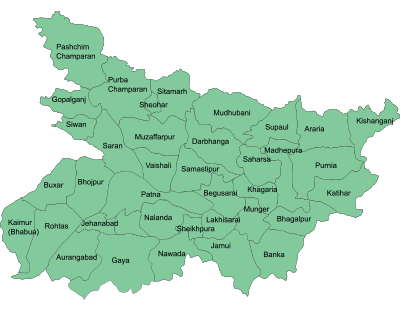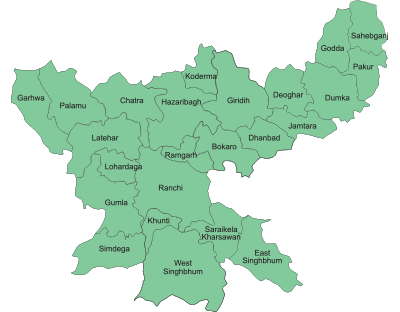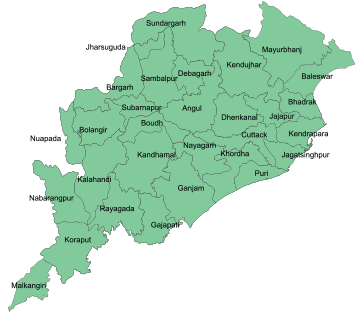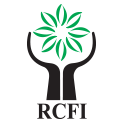West Bengal has a population of about 91 million according to the 2011 Census. According to the Planning Commission, the proportion of population below the poverty line in West Bengal was 31.85 per cent’ (HDI report 2010). As per west Bengal state development report (2010), 10% of the population are still not able to connect to the drinking water supply schemes or programmes or self-initiatives.
RCFI started working in West Bengal in 2002. Currently, it has it’s present in 372 villages. WB programme is integrated and versatile in nature. The major outcomes of the programme during the last years are as follows
West Bengal

Programme Highlights
- RCFI worked in infrastructural development of primary and upper primary schools. 18 schools got better infrastructure in terms of building and other study materials.
- The organization selected the geography after feasibility tests and need analysis where people have fewer resources to develop the infrastructure on their own.
- Three student hostel completed as of now, where 70 students stay at a time. All the hostels are constructed with total sanitation protocol. These hostels are built for financially backward people and orphans.
- Three community irrigation systems installed in D Dinajpur district.
- It helped the people in replacing the diesel mobile engines and this is expected to reduce the carbon footprint in the area. 18 HHs getting water from the system and irrigating 19 acres of land will help the farmers to reduce the cost of cultivation by 30-40%. 962 drinking water shames have been commissioned so far. All of them are under community-based groups. 10,582 HHs are taking benefit from this group drinking water schemes directly where 52,910 people are using it for their hygiene and drinking purposes.
- 97% of the schemes have a lifting device along with the clean platforms. And all the schemes established with the support of the user groups.
- One clinic completed of four beds in Nihi Nagpur, where approximately 3780 people will get proper primary care
- RCFI has adopted 116 students who are orphans and financially backward through a fellowship programme. The fellowship covers their living cost, education fee, and other expenses related to those students.
- Identified 10 HHs who require shelter and from the ultra-poor family through village analysis and constructed houses for them.
- 153 cultural centers constructed at various districts of the WB. The centers can be used for various cultural activities in the local area.
- All the centers are used to motivate people in terms of their socio-economic development. Almost 53550+ people can use the centers at a time.
- All centers followed 100% total sanitation protocols which include personal hygiene center, clean toilets etc.
- Different types of relief works also done in the state like winter dress distribution, blankets and feed the poor campaigns, etc. in the state at various times. People living in very distress conditions got benefit from these activities.
Bihar
Bihar is the 3rd most populous state in India. It is home to over 100 million people, 36 million of whom are poor. As per the World Bank report ‘Bihar is one of the faster growing Low Income States. Since 2005, the pace of poverty reduction in the state has picked up. Despite this, large parts of the state remain very poor. Consumption inequality has remained largely unchanged. Growth is driven mainly by services, but fluctuations in agricultural output put it at risk’ (World Bank. 2016. Bihar – Poverty, growth and inequality ).
Our Bihar Programme has started in 2012. RCFI has taken Bihar in its initial phase itself due to the poverty scenario in Bihar. A total of 437 projects have been completed in the states during these years. We have covered 200+ villages in Bihar through these interventions. 30000+ families benefited through various interventions.

Programme Highlights
- 106 community-level cultural centers have been completed so far. It is estimated that 37000+ families are getting benefits from the same.
- All of the centers are in the middle of the village so that all the villagers can access the same.
- The centers are been used for education, cultural practices, and training.
- Three schools are running in the state. The entire school is been constructed by the organization. 300+ students can use the facility at a time.
- There are other two schools, especially for at-risk orphans. RCFI has constructed all the building premises and basic infrastructure for the same. 167 students are studying in the orphanage now.
- RCFI adopted three poor orphans and providing his all costs including health, education, and living. The organization is also helping the at-risk orphans in developing their career plan and live skills.
- Livelihood activities were another priority in the state. Hundreds of people benefited from various Income Generating Activity.
- RCFI adopted three poor orphans and providing his all costs including health, education, and living. The organization is also helping the at-risk orphans in developing their career plan and live skills.
- 383 group drinking water schemes have been installed as of now, benefitting 1915 households. This can provide clean drinking water for the flood-affected villagers.
- 113 families received lifting devices so that they can use the water for both drinking water purposes and irrigation of the agriculture land.
- This helped in irrigating 565 acres of unirrigated land of marginalized farmers.
- WASH is one of the major concerns in Bihar. The organization has constructed five personal hygiene corner.
- RCFI has invested a lot of time and effort to bring the Bihar programme on the tope scale. The organization could leverage almost 30% of the programme cost from the community and local CBOs and CSOs.
Jharkhand
Jharkhand is the fourteenth most populous state in India and home to 33 million people. Poverty is among the highest in the country today, particularly in the state’s southern and eastern districts. Growth, which is driven mainly by industry, is slow and volatile. Consumption inequality in the state increased marginally after 2005 but remains lower than in most other states.Agriculture is the main source of livelihood for most of the rural people. About 70% of farm households own less than 1 hectare of farmland. The incidence of poverty in Jharkhand is estimated at 46%; however, 60% of schedule caste and schedule tribes are still below the poverty line.
In Jharkhand, RCFI started its operation during 2015. The organization has completed 175 major projects over a period of five years, which includes agriculture enhancement, education, drinking water, and socio-cultural interventions.

Programme Highlights
- Drinking water projects were a major part of the Jharkhand programme. 164 community drinking water projects were completed and hand it over to the local people.
- 121 bore-well based schemes and 43 hand pump based schemes are in operation now. As per the need of the community, organ9zation also provided lifting devices to 21 schemes.
- Four schools are running in the Jharkhand. They all established during 2016 and running now by the local and external donations. Children from very poor households are studying there. More than 350 students can benefit from the interventions.
- One WASH center is established there in Hanvara district.
- 6 community-level cultural center has been constructed. This facility can be used for 360 families at a time. 1200 HHs can use this. They all are constructed in very poor villages.
- Various humanitarian relief works also done benefiting more than 25000+ families like winter dress distribution, blankets and also conducted feed the poor campaigns in the state at various times. People living in very distress conditions got benefit from these activities.
Odisha
Odisha is the eleventh most populous state in India and home to 42 million people. Poverty reduced sharply in the state after 2005 but is still very high. Districts in the south and west are among the poorest in the country and the state is home to 14 million poor. Growth is higher than in some Low Income States but has slipped below the national average in the recent period. Consumption inequality has increased marginally after 2005, mostly in urban areas. And the level of poverty has gone up in Cyclone (recent year’s) hit districts of Odisha where people from the lower-income group have suffered an extreme impact which is clearly shown in an assessment carried out by the Odisha government in collaboration with The World Bank, Asian Development Bank, and the United Nations.
121 major projects have been completed in the state. They all are either in poor villages or in the poor pockets of semi-urban places. RCFI started working in Odisha during 2013. The major highlights are as follows.

Programme Highlights
- Drinking water schemes were the major focus area in Odisha. 117 group drinking water schemes were constructed and commissioned for usages. More than 750 families are using the same.
- 58 schemes are meant for both irrigation and drinking purposes. They all received water-lifting devices along with the wells.
- RCFI adopted one poor orphan and providing his all costs including health, education, and living.
- RCFI has constructed two schools in the state, which is been constructed in Korai and Yousufpur villages. 146 students can study at a time in school.
- One community toilet has constructed in a slum area of Cuttak.
- During the cyclone, RCFI mobilizes crowdfunding for essentials in Odisha. The organization helped people in getting food during festive seasons and calamity times.
Drinking water in the tribal belt would be our priority in the coming years. It is expected that the RCFI will spread across the state to more geographies and themes.

